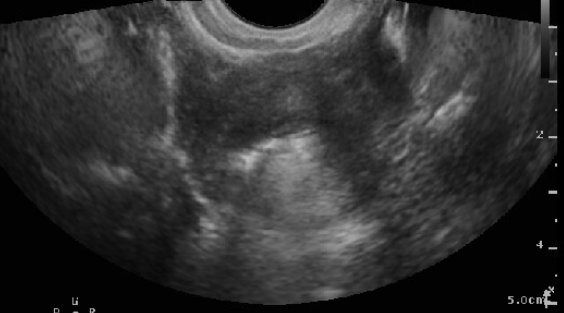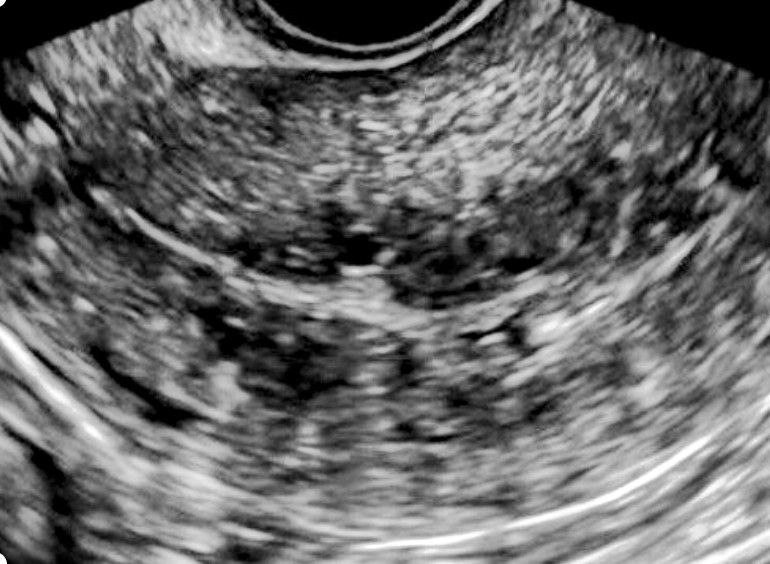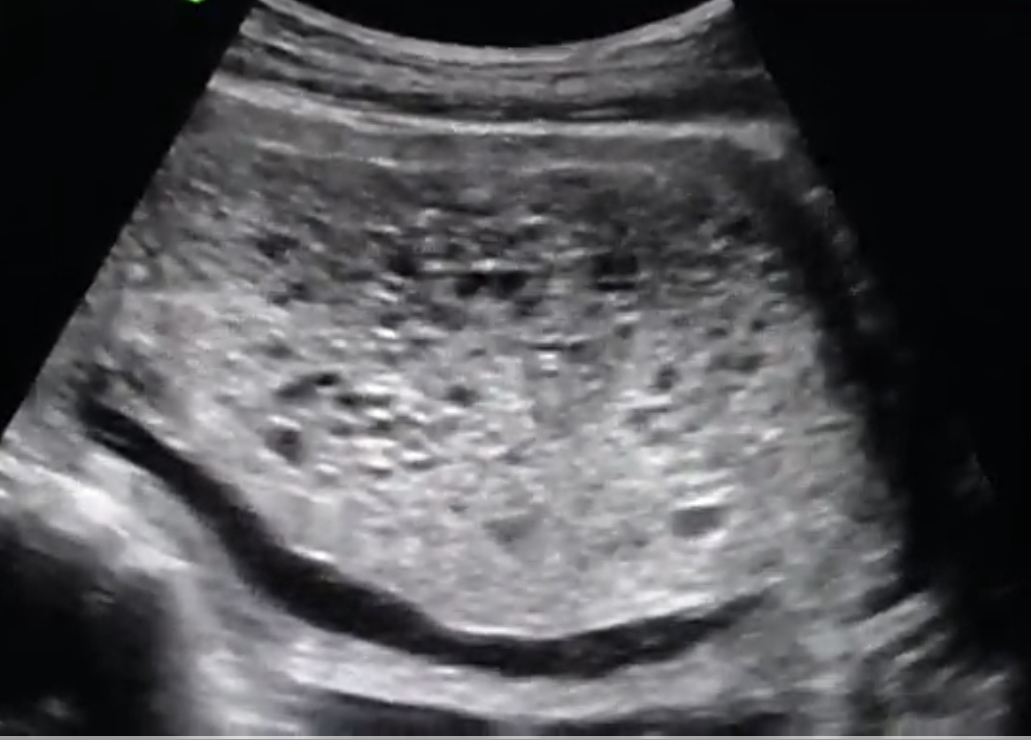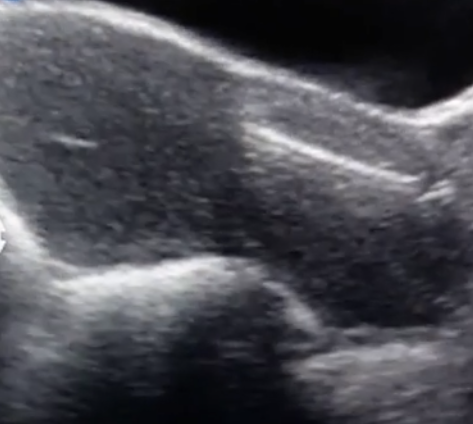[1]
Recker F, Weber E, Strizek B, Gembruch U, Westerway SC, Dietrich CF. Point-of-care ultrasound in obstetrics and gynecology. Archives of gynecology and obstetrics. 2021 Apr:303(4):871-876. doi: 10.1007/s00404-021-05972-5. Epub 2021 Feb 8
[PubMed PMID: 33558990]
[2]
Jensen JA. Medical ultrasound imaging. Progress in biophysics and molecular biology. 2007 Jan-Apr:93(1-3):153-65
[PubMed PMID: 17092547]
[3]
Schwimer SR, Lebovic J. Transvaginal pelvic ultrasonography: accuracy in follicle and cyst size determination. Journal of ultrasound in medicine : official journal of the American Institute of Ultrasound in Medicine. 1985 Feb:4(2):61-3
[PubMed PMID: 3882987]
[4]
Moorthy RS. TRANSVAGINAL SONOGRAPHY. Medical journal, Armed Forces India. 2000 Jul:56(3):181-183. doi: 10.1016/S0377-1237(17)30160-0. Epub 2017 Jun 10
[PubMed PMID: 28790701]
[5]
Timmerman D, Valentin L. Imaging in gynecological disease. Ultrasound in obstetrics & gynecology : the official journal of the International Society of Ultrasound in Obstetrics and Gynecology. 2007 May:29(5):483-4
[PubMed PMID: 17444563]
Level 2 (mid-level) evidence
[6]
Munro MG, Critchley HO, Broder MS, Fraser IS, FIGO Working Group on Menstrual Disorders. FIGO classification system (PALM-COEIN) for causes of abnormal uterine bleeding in nongravid women of reproductive age. International journal of gynaecology and obstetrics: the official organ of the International Federation of Gynaecology and Obstetrics. 2011 Apr:113(1):3-13. doi: 10.1016/j.ijgo.2010.11.011. Epub 2011 Feb 22
[PubMed PMID: 21345435]
[7]
Kondagari L, Kahn J, Singh M. Sonography Gynecology Infertility Assessment, Protocols, and Interpretation. StatPearls. 2025 Jan:():
[PubMed PMID: 34283459]
[8]
Nahlawi S, Gari N. Sonography Transvaginal Assessment, Protocols, and Interpretation. StatPearls. 2023 Jan:():
[PubMed PMID: 34283450]
[9]
Hill LM, Breckle R. Value of a postvoid scan during adnexal sonography. American journal of obstetrics and gynecology. 1985 May 1:152(1):23-5
[PubMed PMID: 3887924]
[10]
Dodson MG, Deter RL. Definition of anatomical planes for use in transvaginal sonography. Journal of clinical ultrasound : JCU. 1990 May:18(4):239-42
[PubMed PMID: 2160990]
[11]
Rottem S, Thaler I, Goldstein SR, Timor-Tritsch IE, Brandes JM. Transvaginal sonographic technique: targeted organ scanning without resorting to "planes". Journal of clinical ultrasound : JCU. 1990 May:18(4):243-7
[PubMed PMID: 2160991]
[12]
Sabry ASA, Fadl SA, Szmigielski W, Alobaidely A, Ahmed SSH, Sherif H, R H Yousef R, Mahfouz A. Diagnostic value of three-dimensional saline infusion sonohysterography in the evaluation of the uterus and uterine cavity lesions. Polish journal of radiology. 2018:83():e482-e490. doi: 10.5114/pjr.2018.80132. Epub 2018 Nov 30
[PubMed PMID: 30655928]
[13]
Kaveh M, Sadegi K, Salarzaei M, Parooei F. Comparison of diagnostic accuracy of saline infusion sonohysterography, transvaginal sonography, and hysteroscopy in evaluating the endometrial polyps in women with abnormal uterine bleeding: a systematic review and meta-analysis. Wideochirurgia i inne techniki maloinwazyjne = Videosurgery and other miniinvasive techniques. 2020 Sep:15(3):403-415. doi: 10.5114/wiitm.2020.93791. Epub 2020 Mar 19
[PubMed PMID: 32904526]
Level 1 (high-level) evidence
[14]
Goyal BK, Gaur I, Sharma S, Saha A, Das NK. Transvaginal sonography versus hysteroscopy in evaluation of abnormal uterine bleeding. Medical journal, Armed Forces India. 2015 Apr:71(2):120-5. doi: 10.1016/j.mjafi.2014.12.001. Epub 2015 Feb 16
[PubMed PMID: 25859072]
[15]
Veena P, Baskaran D, Maurya DK, Kubera NS, Dorairaj J. Addition of power Doppler to grey scale transvaginal ultrasonography for improving the prediction of endometrial pathology in perimenopausal women with abnormal uterine bleeding. The Indian journal of medical research. 2018 Sep:148(3):302-308. doi: 10.4103/ijmr.IJMR_96_17. Epub
[PubMed PMID: 30425220]
[16]
Cunningham RK, Horrow MM, Smith RJ, Springer J. Adenomyosis: A Sonographic Diagnosis. Radiographics : a review publication of the Radiological Society of North America, Inc. 2018 Sep-Oct:38(5):1576-1589. doi: 10.1148/rg.2018180080. Epub
[PubMed PMID: 30207945]
[17]
Puente JM, Fabris A, Patel J, Patel A, Cerrillo M, Requena A, Garcia-Velasco JA. Adenomyosis in infertile women: prevalence and the role of 3D ultrasound as a marker of severity of the disease. Reproductive biology and endocrinology : RB&E. 2016 Sep 20:14(1):60. doi: 10.1186/s12958-016-0185-6. Epub 2016 Sep 20
[PubMed PMID: 27645154]
[18]
Van den Bosch T, Dueholm M, Leone FP, Valentin L, Rasmussen CK, Votino A, Van Schoubroeck D, Landolfo C, Installé AJ, Guerriero S, Exacoustos C, Gordts S, Benacerraf B, D'Hooghe T, De Moor B, Brölmann H, Goldstein S, Epstein E, Bourne T, Timmerman D. Terms, definitions and measurements to describe sonographic features of myometrium and uterine masses: a consensus opinion from the Morphological Uterus Sonographic Assessment (MUSA) group. Ultrasound in obstetrics & gynecology : the official journal of the International Society of Ultrasound in Obstetrics and Gynecology. 2015 Sep:46(3):284-98. doi: 10.1002/uog.14806. Epub 2015 Aug 10
[PubMed PMID: 25652685]
Level 3 (low-level) evidence
[19]
Vannuccini S, Petraglia F. Recent advances in understanding and managing adenomyosis. F1000Research. 2019:8():. pii: F1000 Faculty Rev-283. doi: 10.12688/f1000research.17242.1. Epub 2019 Mar 13
[PubMed PMID: 30918629]
Level 3 (low-level) evidence
[20]
Andres MP, Borrelli GM, Ribeiro J, Baracat EC, Abrão MS, Kho RM. Transvaginal Ultrasound for the Diagnosis of Adenomyosis: Systematic Review and Meta-Analysis. Journal of minimally invasive gynecology. 2018 Feb:25(2):257-264. doi: 10.1016/j.jmig.2017.08.653. Epub 2017 Aug 30
[PubMed PMID: 28864044]
Level 1 (high-level) evidence
[21]
Batra S, Khanna A, Shukla RC. Power Doppler sonography - A supplement to hysteroscopy in abnormal uterine bleeding: Redefining diagnostic strategies. Indian journal of cancer. 2022 Apr-Jun:59(2):194-202. doi: 10.4103/ijc.IJC_676_19. Epub
[PubMed PMID: 33753626]
[22]
Buckley E, Kondagari L. Sonography Postmenopausal Assessment, Protocols, and Interpretation. StatPearls. 2025 Jan:():
[PubMed PMID: 34033403]
[23]
Van Den Bosch T, Verbakel JY, Valentin L, Wynants L, De Cock B, Pascual MA, Leone FPG, Sladkevicius P, Alcazar JL, Votino A, Fruscio R, Lanzani C, Van Holsbeke C, Rossi A, Jokubkiene L, Kudla M, Jakab A, Domali E, Epstein E, Van Pachterbeke C, Bourne T, Van Calster B, Timmerman D. Typical ultrasound features of various endometrial pathologies described using International Endometrial Tumor Analysis (IETA) terminology in women with abnormal uterine bleeding. Ultrasound in obstetrics & gynecology : the official journal of the International Society of Ultrasound in Obstetrics and Gynecology. 2021 Jan:57(1):164-172. doi: 10.1002/uog.22109. Epub
[PubMed PMID: 32484286]
[24]
Goldstein RB, Bree RL, Benson CB, Benacerraf BR, Bloss JD, Carlos R, Fleischer AC, Goldstein SR, Hunt RB, Kurman RJ, Kurtz AB, Laing FC, Parsons AK, Smith-Bindman R, Walker J. Evaluation of the woman with postmenopausal bleeding: Society of Radiologists in Ultrasound-Sponsored Consensus Conference statement. Journal of ultrasound in medicine : official journal of the American Institute of Ultrasound in Medicine. 2001 Oct:20(10):1025-36
[PubMed PMID: 11587008]
Level 3 (low-level) evidence
[25]
Hamel CC, van Wessel S, Carnegy A, Coppus SFPJ, Snijders MPML, Clark J, Emanuel MH. Diagnostic criteria for retained products of conception-A scoping review. Acta obstetricia et gynecologica Scandinavica. 2021 Dec:100(12):2135-2143. doi: 10.1111/aogs.14229. Epub 2021 Aug 12
[PubMed PMID: 34244998]
Level 2 (mid-level) evidence
[26]
Akiba N, Iriyama T, Nakayama T, Seyama T, Sayama S, Kumasawa K, Komatsu A, Yabe S, Nagamatsu T, Osuga Y, Fujii T. Ultrasonographic vascularity assessment for predicting future severe hemorrhage in retained products of conception after second-trimester abortion. The journal of maternal-fetal & neonatal medicine : the official journal of the European Association of Perinatal Medicine, the Federation of Asia and Oceania Perinatal Societies, the International Society of Perinatal Obstetricians. 2021 Feb:34(4):562-568. doi: 10.1080/14767058.2019.1610739. Epub 2019 Apr 29
[PubMed PMID: 31006292]
[27]
Expert Panel on Women’s Imaging Panel, Dudiak KM, Maturen KE, Akin EA, Bell M, Bhosale PR, Kang SK, Kilcoyne A, Lakhman Y, Nicola R, Pandharipande PV, Paspulati R, Reinhold C, Ricci S, Shinagare AB, Vargas HA, Whitcomb BP, Glanc P. ACR Appropriateness Criteria® Gestational Trophoblastic Disease. Journal of the American College of Radiology : JACR. 2019 Nov:16(11S):S348-S363. doi: 10.1016/j.jacr.2019.05.015. Epub
[PubMed PMID: 31685103]
[28]
Marret H, Cayrol M. [Sonographic diagnosis of presumed benign ovarian tumors]. Journal de gynecologie, obstetrique et biologie de la reproduction. 2013 Dec:42(8):730-43. doi: 10.1016/j.jgyn.2013.09.028. Epub 2013 Nov 5
[PubMed PMID: 24200073]
[29]
Solanki V, Singh P, Sharma C, Ghuman N, Sureka B, Shekhar S, Gothwal M, Yadav G. Predicting Malignancy in Adnexal Masses by the International Ovarian Tumor Analysis-Simple Rules. Journal of mid-life health. 2020 Oct-Dec:11(4):217-223. doi: 10.4103/jmh.JMH_103_20. Epub 2021 Jan 21
[PubMed PMID: 33767562]
[30]
Timmerman D, Van Calster B, Testa A, Savelli L, Fischerova D, Froyman W, Wynants L, Van Holsbeke C, Epstein E, Franchi D, Kaijser J, Czekierdowski A, Guerriero S, Fruscio R, Leone FPG, Rossi A, Landolfo C, Vergote I, Bourne T, Valentin L. Predicting the risk of malignancy in adnexal masses based on the Simple Rules from the International Ovarian Tumor Analysis group. American journal of obstetrics and gynecology. 2016 Apr:214(4):424-437. doi: 10.1016/j.ajog.2016.01.007. Epub 2016 Jan 19
[PubMed PMID: 26800772]
[31]
Jeong YY, Outwater EK, Kang HK. Imaging evaluation of ovarian masses. Radiographics : a review publication of the Radiological Society of North America, Inc. 2000 Sep-Oct:20(5):1445-70
[PubMed PMID: 10992033]
[32]
Barloon TJ, Brown BP, Abu-Yousef MM, Warnock NG. Paraovarian and paratubal cysts: preoperative diagnosis using transabdominal and transvaginal sonography. Journal of clinical ultrasound : JCU. 1996 Mar-Apr:24(3):117-22
[PubMed PMID: 8838299]
[33]
Fatum M, Rojansky N, Shushan A. Papillary serous cystadenofibroma of the ovary--is it really so rare? International journal of gynaecology and obstetrics: the official organ of the International Federation of Gynaecology and Obstetrics. 2001 Oct:75(1):85-6
[PubMed PMID: 11597627]
[34]
Patel MD, Acord DL, Young SW. Likelihood ratio of sonographic findings in discriminating hydrosalpinx from other adnexal masses. AJR. American journal of roentgenology. 2006 Apr:186(4):1033-8
[PubMed PMID: 16554575]
[35]
Savelli L, de Iaco P, Ghi T, Bovicelli L, Rosati F, Cacciatore B. Transvaginal sonographic appearance of peritoneal pseudocysts. Ultrasound in obstetrics & gynecology : the official journal of the International Society of Ultrasound in Obstetrics and Gynecology. 2004 Mar:23(3):284-8
[PubMed PMID: 15027019]
[36]
Natkanska A, Bizon-Szpernalowska MA, Milek T, Sawicki W. Peritoneal inclusion cysts as a diagnostic and treatment challenge. Ginekologia polska. 2021:92(8):583-586. doi: 10.5603/GP.a2021.0142. Epub
[PubMed PMID: 34541630]
[37]
Nemoto Y, Ishihara K, Sekiya T, Konishi H, Araki T. Ultrasonographic and clinical appearance of hemorrhagic ovarian cyst diagnosed by transvaginal scan. Journal of Nippon Medical School = Nippon Ika Daigaku zasshi. 2003 Jun:70(3):243-9
[PubMed PMID: 12928726]
[38]
Kim HC, Kim SH, Lee HJ, Shin SJ, Hwang SI, Choi YH. Fluid-fluid levels in ovarian teratomas. Abdominal imaging. 2002 Jan-Feb:27(1):100-5
[PubMed PMID: 11740619]
[39]
Ștefan RA, Ștefan PA, Mihu CM, Csutak C, Melincovici CS, Crivii CB, Maluțan AM, Hîțu L, Lebovici A. Ultrasonography in the Differentiation of Endometriomas from Hemorrhagic Ovarian Cysts: The Role of Texture Analysis. Journal of personalized medicine. 2021 Jun 28:11(7):. doi: 10.3390/jpm11070611. Epub 2021 Jun 28
[PubMed PMID: 34203314]
[40]
Ameye L, Timmerman D, Valentin L, Paladini D, Zhang J, Van Holsbeke C, Lissoni AA, Savelli L, Veldman J, Testa AC, Amant F, Van Huffel S, Bourne T. Clinically oriented three-step strategy for assessment of adnexal pathology. Ultrasound in obstetrics & gynecology : the official journal of the International Society of Ultrasound in Obstetrics and Gynecology. 2012 Nov:40(5):582-91. doi: 10.1002/uog.11177. Epub
[PubMed PMID: 22511559]
[41]
Marko J, Marko KI, Pachigolla SL, Crothers BA, Mattu R, Wolfman DJ. Mucinous Neoplasms of the Ovary: Radiologic-Pathologic Correlation. Radiographics : a review publication of the Radiological Society of North America, Inc. 2019 Jul-Aug:39(4):982-997. doi: 10.1148/rg.2019180221. Epub
[PubMed PMID: 31283462]
[42]
Taylor EC, Irshaid L, Mathur M. Multimodality Imaging Approach to Ovarian Neoplasms with Pathologic Correlation. Radiographics : a review publication of the Radiological Society of North America, Inc. 2021 Jan-Feb:41(1):289-315. doi: 10.1148/rg.2021200086. Epub 2020 Nov 13
[PubMed PMID: 33186060]
[43]
Shetty M. Imaging and Differential Diagnosis of Ovarian Cancer. Seminars in ultrasound, CT, and MR. 2019 Aug:40(4):302-318. doi: 10.1053/j.sult.2019.04.002. Epub 2019 Apr 25
[PubMed PMID: 31375171]
[44]
Kilinc YB, Sari L, Toprak H, Gultekin MA, Karabulut UE, Sahin N. Ovarian Granulosa Cell Tumor: A Clinicoradiologic Series with Literature Review. Current medical imaging. 2021:17(6):790-797. doi: 10.2174/1573405616666201228153755. Epub
[PubMed PMID: 33371855]
[45]
Revzin MV, Mathur M, Dave HB, Macer ML, Spektor M. Pelvic Inflammatory Disease: Multimodality Imaging Approach with Clinical-Pathologic Correlation. Radiographics : a review publication of the Radiological Society of North America, Inc. 2016 Sep-Oct:36(5):1579-96. doi: 10.1148/rg.2016150202. Epub
[PubMed PMID: 27618331]
[46]
Kinay T, Unlubilgin E, Cirik DA, Kayikcioglu F, Akgul MA, Dolen I. The value of ultrasonographic tubo-ovarian abscess morphology in predicting whether patients will require surgical treatment. International journal of gynaecology and obstetrics: the official organ of the International Federation of Gynaecology and Obstetrics. 2016 Oct:135(1):77-81. doi: 10.1016/j.ijgo.2016.04.006. Epub 2016 Jun 17
[PubMed PMID: 27381446]
[47]
Dawood MT, Naik M, Bharwani N, Sudderuddin SA, Rockall AG, Stewart VR. Adnexal Torsion: Review of Radiologic Appearances. Radiographics : a review publication of the Radiological Society of North America, Inc. 2021 Mar-Apr:41(2):609-624. doi: 10.1148/rg.2021200118. Epub 2021 Feb 12
[PubMed PMID: 33577417]
[48]
Ssi-Yan-Kai G, Rivain AL, Trichot C, Morcelet MC, Prevot S, Deffieux X, De Laveaucoupet J. What every radiologist should know about adnexal torsion. Emergency radiology. 2018 Feb:25(1):51-59. doi: 10.1007/s10140-017-1549-8. Epub 2017 Sep 7
[PubMed PMID: 28884300]
[49]
Wilson MP, Katlariwala P, Hwang J, Low G. Radiographic Features of a Benign Mixed Brenner Tumor and Mucinous Cystadenoma: A Rarely Identified Ovarian Neoplasm on Imaging. Journal of clinical imaging science. 2020:10():22. doi: 10.25259/JCIS_1_2020. Epub 2020 Apr 27
[PubMed PMID: 32363084]
[50]
Conte M, Guariglia L, Benedetti Panici P, Scambia G, Rabitti C, Capelli A, Mancuso S. Ovarian fibrothecoma: sonographic and histologic findings. Gynecologic and obstetric investigation. 1991:32(1):51-4
[PubMed PMID: 1662660]
[51]
Paladini D, Testa A, Van Holsbeke C, Mancari R, Timmerman D, Valentin L. Imaging in gynecological disease (5): clinical and ultrasound characteristics in fibroma and fibrothecoma of the ovary. Ultrasound in obstetrics & gynecology : the official journal of the International Society of Ultrasound in Obstetrics and Gynecology. 2009 Aug:34(2):188-95. doi: 10.1002/uog.6394. Epub
[PubMed PMID: 19526595]
Level 2 (mid-level) evidence
[52]
Chen J, Liu Y, Zhang Y, Wang Y, Chen X, Wang Z. Imaging, clinical, and pathologic findings of Sertoli-leydig cell tumors. Science progress. 2021 Apr-Jun:104(2):368504211009668. doi: 10.1177/00368504211009668. Epub
[PubMed PMID: 33848213]
[53]
Kouakou B, Kamara I, Silue AD, Meite N, Botti RP, Tolo-Diebkile A, Sanogo I. [Retrospective study about 20 cases of ovarian Burkitt lymphoma at Yopougon teaching hospital in Côte d'Ivoire]. Bulletin du cancer. 2019 Mar:106(3):275-278. doi: 10.1016/j.bulcan.2018.12.011. Epub 2019 Feb 14
[PubMed PMID: 30771880]
Level 2 (mid-level) evidence
[54]
Dorosiev E, Muzikadzhieva G, Mladenov B, Stoev I, Velev D. Renal abnormalities associated with Mayer-Rokitansky-Küster-Hauser syndrome. Folia medica. 2021 Oct 31:63(5):815-818. doi: 10.3897/folmed.63.e63325. Epub
[PubMed PMID: 35851218]
[55]
Jayaprakasan K, Ojha K. Diagnosis of Congenital Uterine Abnormalities: Practical Considerations. Journal of clinical medicine. 2022 Feb 25:11(5):. doi: 10.3390/jcm11051251. Epub 2022 Feb 25
[PubMed PMID: 35268343]
[56]
Osayande AS, Mehulic S. Diagnosis and initial management of dysmenorrhea. American family physician. 2014 Mar 1:89(5):341-6
[PubMed PMID: 24695505]
[57]
Chaabane S, Nguyen Xuan HT, Paternostre A, Du Cheyron J, Harizi R, Mimouni M, Fauconnier A. [Endometriosis: Assessment of the Ultrasound-Based Endometriosis Staging System score (UBESS) in predicting surgical difficulty]. Gynecologie, obstetrique, fertilite & senologie. 2019 Mar:47(3):265-272. doi: 10.1016/j.gofs.2018.12.003. Epub 2019 Jan 26
[PubMed PMID: 30691974]
[58]
Menakaya U, Reid S, Lu C, Gerges B, Infante F, Condous G. Performance of ultrasound-based endometriosis staging system (UBESS) for predicting level of complexity of laparoscopic surgery for endometriosis. Ultrasound in obstetrics & gynecology : the official journal of the International Society of Ultrasound in Obstetrics and Gynecology. 2016 Dec:48(6):786-795. doi: 10.1002/uog.15858. Epub
[PubMed PMID: 26764187]
[59]
Lee R, Dupuis C, Chen B, Smith A, Kim YH. Diagnosing ectopic pregnancy in the emergency setting. Ultrasonography (Seoul, Korea). 2018 Jan:37(1):78-87. doi: 10.14366/usg.17044. Epub 2017 Aug 19
[PubMed PMID: 29061036]
[60]
Barthelmess EK, Naz RK. Polycystic ovary syndrome: current status and future perspective. Frontiers in bioscience (Elite edition). 2014 Jan 1:6(1):104-19
[PubMed PMID: 24389146]
Level 3 (low-level) evidence
[61]
Bello FA, Odeku AO. POLYCYSTIC OVARIES: A COMMON FEATURE IN TRANSVAGINAL SCANS OF GYNAECOLOGICAL PATIENTS. Annals of Ibadan postgraduate medicine. 2015 Dec:13(2):108-9
[PubMed PMID: 27162523]
Level 2 (mid-level) evidence
[62]
Balen AH, Laven JS, Tan SL, Dewailly D. Ultrasound assessment of the polycystic ovary: international consensus definitions. Human reproduction update. 2003 Nov-Dec:9(6):505-14
[PubMed PMID: 14714587]
Level 3 (low-level) evidence
[63]
Moschos E, Twickler DM. Prediction of polycystic ovarian syndrome based on ultrasound findings and clinical parameters. Journal of clinical ultrasound : JCU. 2015 Mar:43(3):157-63. doi: 10.1002/jcu.22182. Epub 2014 Jun 4
[PubMed PMID: 24898321]
[64]
Mentessidou A, Mirilas P. Surgical disorders in pediatric and adolescent gynecology: Vaginal and uterine anomalies. International journal of gynaecology and obstetrics: the official organ of the International Federation of Gynaecology and Obstetrics. 2023 Mar:160(3):762-770. doi: 10.1002/ijgo.14362. Epub 2022 Aug 12
[PubMed PMID: 35880405]
[65]
Ramdani H, Benbrahim FZ, Jidal M, Zamani O, Drissi M, En-Nouali H, El Fenni J. Primary amenorrhea secondary to imperforate hymen. Clinical case reports. 2022 Apr:10(4):e05786. doi: 10.1002/ccr3.5786. Epub 2022 Apr 26
[PubMed PMID: 35498351]
Level 3 (low-level) evidence
[66]
Abdellaoui M, Fenni JE, Edderai M. [Mayer-Rokitansky-Küster-Hauser syndrome: a cause of primary amenorrhea: about a case]. The Pan African medical journal. 2021:40():260. doi: 10.11604/pamj.2021.40.260.29181. Epub 2021 Dec 23
[PubMed PMID: 35251454]
Level 3 (low-level) evidence
[67]
Rodrigues EB, Braga J, Gama M, Guimarães MM. Turner syndrome patients' ultrasound profile. Gynecological endocrinology : the official journal of the International Society of Gynecological Endocrinology. 2013 Jul:29(7):704-6. doi: 10.3109/09513590.2013.797391. Epub
[PubMed PMID: 23772782]
Level 2 (mid-level) evidence
[68]
Akierman SV, Skappak CD, Girgis R, Ho J. Turner Syndrome and apparent absent uterus: a case report and review of the literature. Journal of pediatric endocrinology & metabolism : JPEM. 2013:26(5-6):587-9. doi: 10.1515/jpem-2012-0408. Epub
[PubMed PMID: 23443264]
Level 3 (low-level) evidence
[69]
Ahmadi F, Javam M. Role of 3D sonohysterography in the investigation of uterine synechiae/asherman's syndrome: pictorial assay. Journal of medical imaging and radiation oncology. 2014 Apr:58(2):199-202. doi: 10.1111/1754-9485.12137. Epub 2013 Dec 3
[PubMed PMID: 24314038]
[70]
Tan IF, Robertson M. The role of imaging in the investigation of Asherman's syndrome. Australasian journal of ultrasound in medicine. 2011 Aug:14(3):15-18. doi: 10.1002/j.2205-0140.2011.tb00118.x. Epub 2015 Dec 31
[PubMed PMID: 28191115]
[71]
Chandler TM, Machan LS, Cooperberg PL, Harris AC, Chang SD. Mullerian duct anomalies: from diagnosis to intervention. The British journal of radiology. 2009 Dec:82(984):1034-42. doi: 10.1259/bjr/99354802. Epub 2009 May 11
[PubMed PMID: 19433480]
[72]
Acharya PT, Ponrartana S, Lai L, Vasquez E, Goodarzian F. Imaging of congenital genitourinary anomalies. Pediatric radiology. 2022 Apr:52(4):726-739. doi: 10.1007/s00247-021-05217-2. Epub 2021 Nov 5
[PubMed PMID: 34741177]
[73]
Zhang L, Zheng Q, Xie H, Du L, Wu L, Lin M. Quantitative cervical elastography: a new approach of cervical insufficiency prediction. Archives of gynecology and obstetrics. 2020 Jan:301(1):207-215. doi: 10.1007/s00404-019-05377-5. Epub 2019 Nov 22
[PubMed PMID: 31758303]
[74]
Fleischer AC, Harvey SM, Kurita SC, Andreotti RF, Zimmerman CW. Two-/three-dimensional transperineal sonography of complicated tape and mesh implants. Ultrasound quarterly. 2012 Dec:28(4):243-9. doi: 10.1097/RUQ.0b013e3182749585. Epub
[PubMed PMID: 23149508]
[75]
Griffiths A, Koutsouridou R, Vaughan S, Penketh R, Roberts SA, Torkington J. Transrectal ultrasound and the diagnosis of rectovaginal endometriosis: a prospective observational study. Acta obstetricia et gynecologica Scandinavica. 2008:87(4):445-8. doi: 10.1080/00016340801948318. Epub
[PubMed PMID: 18382872]
Level 2 (mid-level) evidence
[76]
Brown DL, Dudiak KM, Laing FC. Adnexal masses: US characterization and reporting. Radiology. 2010 Feb:254(2):342-54. doi: 10.1148/radiol.09090552. Epub 2010 Jan 20
[PubMed PMID: 20089722]




